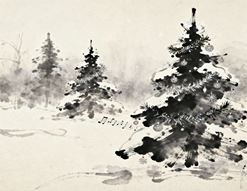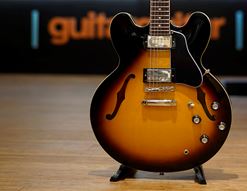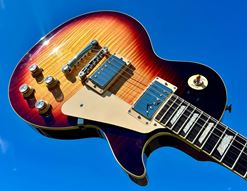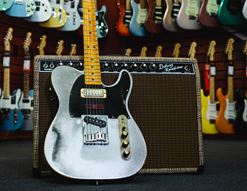What are your thoughts on grunge? Grunge was a moment in time, it was a scene, an attitude, a marketing tool, a fashion shorthand and a banner for a generation. It was a lot of things at the time, and many of the primary parties involved didn’t even like the ‘grunge’ label.
Still, it stuck, and in the years since it has become a byword for a counterculture, an aesthetic, and a sound which could be described as anthemic-yet-melancholic heavy rock. It was the antithesis of the hair metal that preceded it, and it combined 70s hard rock with punk and 80s alternative music to bring around something that was simultaneously fresh and familiar. There were riffs, solos, noise, melodies and harmonies, all tied up with a particular angst and response to dire social situations.
It was powerful stuff, and that’s why we are still talking about it all these years later. We don’t always fully understand these moments as they are occurring, but with the three dances’ worth of hindsight we now have, we can see it for the significant cultural movement that it was.
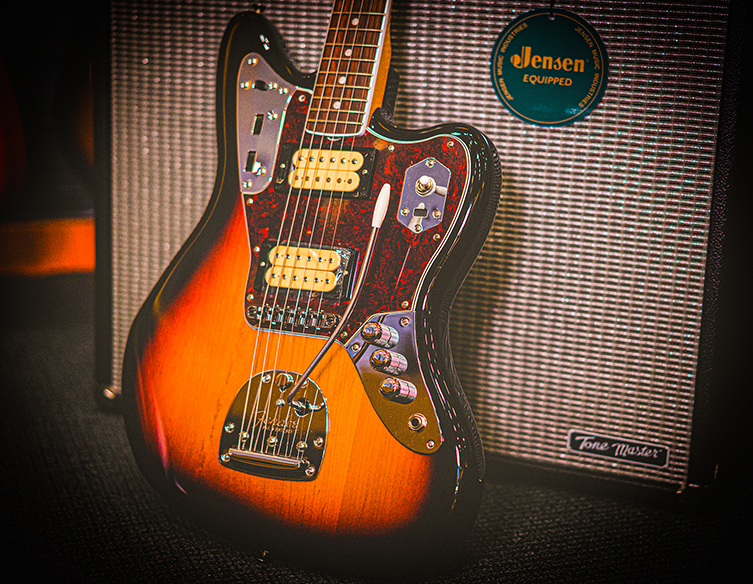
What is Grunge?
But what was grunge? Did the music have to come from Seattle/Washington? Lots of purists would say that yes, it did. Location was important to the social situation, the housing, the clothing, the relationships and ultimately the music. Some people say that grunge was a buzzword for what locals called ‘the Seattle sound’, and therefore had to be from the Washington area to really ‘be’ grunge. The despair had to come from the rain and heroin of Seattle in the late 80s, or so goes the thinking.
I understand that and accept it all, but I’m not sure I fully agree. Some of grunge’s biggest acts were from outside the area: Stone Temple Pilots were from San Diego and the Smashing Pumpkins hailed from Chicago, for example. And how can anyone talk about grunge without mentioning Courtney Love and her band Hole? They were from Los Angeles!
So, for today’s blog, I am going to court controversy with the purists by including a few seminal records that did not appear from under the shadow of Mt Rainier, as it were. With an emphasis on Seattle but not strict rules on it, here are the greatest grunge albums of all time, in chronological order…
The Best Grunge Albums of All Time, At a Glance
Deep Six - Various Artists (March 21st, 1986)
Temple of the Dog - Temple of the Dog (16th April 1991)
Nevermind - Nirvana (24th September 1991)
Dirt - Alice in Chains (29th September 1992)
Siamese Dream - Smashing Pumpkins (July 1993)
Superunknown - Soundgarden (8th March 1994)
Live Through This - Hole (April 12th 1994)
Purple - Stone Temple Pilots (June 1994)
Dust - Screaming Trees (25th June 1996)
Deep Six - Various Artists (March 21st, 1986)
If one record could sum up the genesis of grunge, then it would have to be this one. Deep Six is a compilation from 1986, documenting the move from Seattle-based indie rock to the music that would become known as grunge. Deep Six was put together specifically to showcase the special scene that had been gathering momentum up in Seattle.
On this album are household names like Soundgarden and The Melvins, alongside Green River, the band that contained Temple of the Dog & Pearl Jam’s Stone Gossard and Jeff Ament, and also Mudhoney’s Mark Arm.
Also present was the band Malfunkshun, led by tragic scene luminary Andy Wood who later formed Mother Love Bone. As a document of a time and place, this is an essential artefact: it was the first grunge compilation, a time capsule of mid-80s Seattle, and the sound of grunge before it was grunge.
Temple of the Dog - Temple of the Dog (16th April 1991)
Temple of the Dog are simultaneously a grunge supergroup (though not by design) and a hugely influential force within the scene itself. Normally, a supergroup comes around after a scene has run out of steam, but these circumstances were different…
Mother Love Bone’s Andy Wood (heard previously in Malfunkshun) was the Seattle scene’s leading light, an artist whom all expected to become a huge, charismatic star. Sadly, his moment never came and he died from an accidental heroin overdose.
Instead of letting his memory die, his friends from his band Mother Love Bone (which contained ex-Green River members) and Soundgarden created a tribute band called Temple of the Dog to serve as his legacy. The short-lived collective also included Mother Love Bone’s replacement singer, Eddie Vedder, just as the band were changing their name to Pearl Jam. Temple of the Dog recorded one self-titled album and went back to their respective bands, leaving this album as a monument to their fallen friend.
Nevermind - Nirvana (24th September 1991)
Of course Nevermind was going to be included here. Of course it was! Maybe you prefer In Utero, or think that Bleach had better riffs (I wouldn’t disagree), but Nevermind was the record that caused the seismic shift in culture. It’s the one that put ‘Seattle’ on the map in a way that, really, no other music did.
The first half of this actually-quite-obscure sounding album is probably the most listened-to in Nirvana’s entire catalogue. Smells Like Teen Spirit is one of the world’s most recognised songs, to the extent that it may even have lost a little bit of its initial explosive power.
Be that as it may, it’s a primal roar, a generational flare in the sky that was never repeated, by Cobain or anybody else.
Dirt - Alice in Chains (29th September 1992)
It’s easy to use hindsight and ascribe Alice in Chains’ haunted, deathly sound to their doomed frontman Layne Staley. Certainly, the band sings about the hell of addiction on more than one occasion in Dirt, and there are song names like Godsmack and Junkhead. So you could think that, but you’d be missing the fact that all but two of the songs were written by guitarist and co-vocalist Jerry Cantrell, who also either wrote or co-wrote the lyrics.
Cantrell has spoken to the mixed messages sometimes received by listeners about heroin: “With Dirt, it's not like we were saying 'Oh yeah, this is a good thing.' It was more of a warning than anything else”. Certainly, the drug claimed the lives of two members, so its spectre is one that surrounds the album and leads to these assumptions.
What there can be no miscommunication on, however, is the quality of the songs onboard. Talk about starting strong?! The first four tunes on Dirt could go two to toe with any record in history, and the quality holds up for the remainder of the album. The band displays their knack for atmospheric vocal harmonies and grade-A riffs alongside Cantrell’s songwriting nous to deliver a grunge masterpiece.
Siamese Dream - Smashing Pumpkins (July 1993)
And so to the first of my non-Seattle choices today. Realistically though, how can I talk about grunge music without including this titan of a record? Siamese Dream takes the Big Muff guitar sound to its zenith, with a suite of densely orchestrated songs that revel in drama, dynamics and texture whilst delivering some of Grunge’s best moments (example: Cherub Rock’s stuttering drum intro bursting into life with a glorious octave riff; the whisper-quiet intro to Soma; the breakdown in Hummer…the list goes on).
By all accounts, Siamese Dream was an agonising record to bring to life, but what a glorious life it has had!
Vs - Pearl Jam (October 1993)
Now this is a contentious one. Common consus might dictate that Pearl Jam’s debut record Ten belongs on this list. There’s no mistaking that it’s a great album, and it does contain the band’s strongest singles (Alive, Jeremy, Even Flow), but…Vs is the stronger record.
Vs starts off at full steam and never lets up on the quality, whilst also bringing more light and shade to proceedings. When it rocks, it rocks harder than Ten (Go, Animal, Blood) and when it calms down, there’s a stateliness present that was new to their sound. And it’s so full of great tunes that the band were confident enough to leave belters like Rearviewmirror until well into that latter half. Punch for punch, Vs defeats Ten.
Superunknown - Soundgarden (8th March 1994)
Soundgarden are perhaps the most significant grunge band from the perspective of being inside the scene itself. They enjoyed success before any other bands, but they always made sure to collaborate with local musicians and build strength into the scene, helping to forge the Seattle sound. Vocalist Chris Cornell’s championing of newcomer Eddie Vedder (not a Seattle native) in the wake of his friend Andy Wood’s death spoke volumes to the rest of Seattle’s hard rockers, and about how to nurture the culture around them.
Early Soundgarden was definitely more metal, sludgy and Sabbath-influenced (no bad thing), but 1994’s Superunknown - their masterpiece - stands quite apart. Stylistically, everything they are known for remains, but is heavily expanded upon, with more disparate textures and rhythms involved. The writing is deeper, more arty, more oblique, and features some of grunge’s best known songs. The best grunge album ever? Maybe!
Live Through This - Hole (April 12th 1994)
Live Through This was released only a week after the death of Kurt Cobain. Prior to this, Courtney Love had moved her band out of Los Angeles to escape the situation with the LA riots. Living in a house in Washington together with her husband Cobain, Love and her band members strove to deliver something that would compete with Nirvana: "I was very competitive with Kurt because I wanted more melody. But I already wanted that before "Live Through This."
This shift from noise to melody is perhaps significant in gaining Hole a bigger audience, and it’s certainly why this record is remembered as well as it is. Live Through This also saw Kisrten Pfaff joining the group. A classically trained cellist, Pfaff played bass for Hole and by all accounts upped their game as musicians. Love was still basing their songs on her life experience, but looked to expand her horizons: "You know, when women say, "Well, I play music, and it's cathartic," that applies to me to a degree, but I just wanted to write a good rock record. I would love to write a couple of great rock songs in my life, like Chrissie Hynde did. If you write something that will transcend a long period of time and make people feel a certain way, there's really nothing like that."
Purple - Stone Temple Pilots (June 1994)
San Diego’s Stone Temple Pilots committed the double grunge-crimes of being from outside Seattle and of being popular on MTV. Their quick mainstream acceptance turned the grunge gatekeepers against them, declaring them an insincere parody of grunge’s earnestness.
Looking back, it’s a bit harsh. Musically, they fit right in with the times, and their hard rock sound developed at the same time as those bands in Seattle, not after.
Their first record Core is regarded highly by many, but I believe most STP fans will be more than happy to accept 1994’s Purple in today’s list. The album initially didn’t even have an official name, and many called it ‘12 Gracious Melodies’ due to that slogan appearing on the album’s back cover. Still, it’s what’s inside that counts, and this album contains several of the era’s defining songs, from Interstate Love Song to Vaseline, to Big Empty which even appeared in the zeitgeist-forming movie The Crow.
Dust - Screaming Trees (25th June 1996)
Mark Lanegan’s voice is a most rare instrument indeed. Bruised, rusty and full of regret, his vocals sum up that elegiac, heartbroken end of an era that came around after Cobain died. He always sounded like that, but this close friend of Kurt’s (in his autobiography, Lanegan admits to ignoring phone calls from Cobain on the day Kurt shot himself) felt it more than most.
This last album from Screaming Trees evokes the cold tombstones and rainswept sadness like a direct dispatch from death. They were always a volatile band, and Lanegan arguably saw more measured success as a solo artist, but this album is a raw document of loss by those who have clung on and survived, at least for that moment.
Grunge is Timeless
So, what do you think of those choices? I wasn’t trying to be deliberately provocative (Vs IS better than Ten!) but I understand that some of you might have grievances about the lack of Mudhoney etc. All I can say is this: I went for the songs, not the historical value.
You may have noticed that I included release dates for each album? I thought it was worth showing just how potent this era was for great music, and my choices don’t even reflect that accurately: for instance, 1991 was not only the year of Nevermind and Temple of the Dog, but also Pearl Jam’s Ten, Smashing Pumpkins’ Gish, Soundgarden’s Badmotorfinger, Screaming Tress’ Uncle Anaesthesia, Hole’s Pretty on the Inside and Mudhoney’s Every Good Boy Deserves Fudge!!!
What a year! Grunge existed before then, as we’ve seen, and it lasted in slightly other forms after the mid-90s (Alternative rock, post-grunge etc etc) but I suppose it’s all just rock music, right?
Still, what a collective body of work. It’s everlasting, and that’s somehow even more special given how many of those involved in the making of that music didn’t get to enjoy long lives themselves.


